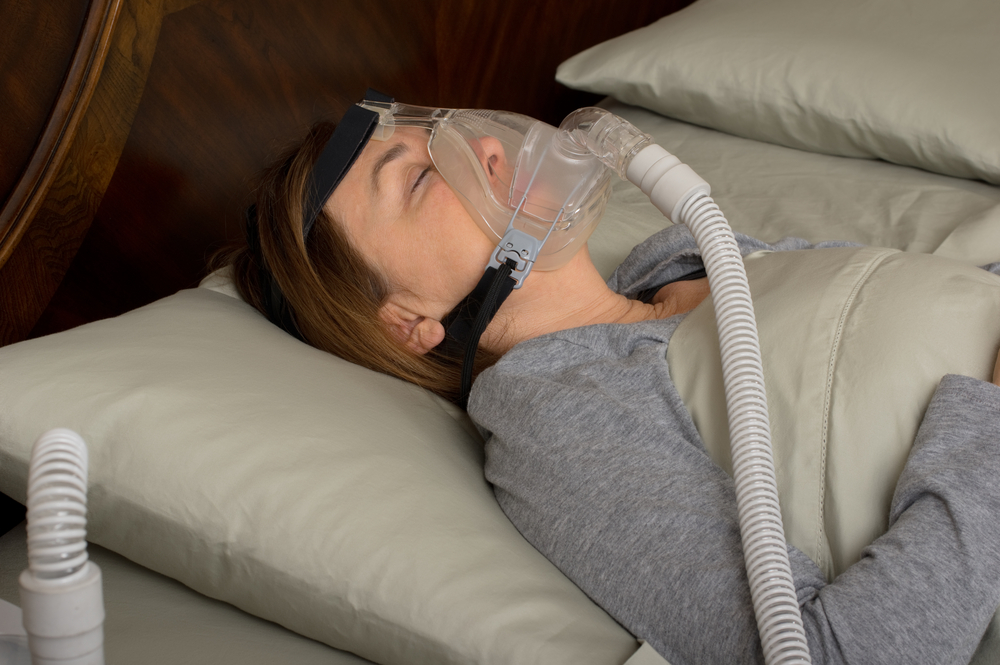 If you’re constantly feeling drowsy despite a full night’s rest, or your partner’s noted that you snore loudly and occasionally stop breathing when you sleep, you might have sleep apnea. This is a sleep disorder that impacts an estimated 12% of the population, according to the Journal of Clinical Sleep Medicine. But what many don’t realize is that there’s more than one type of sleep apnea out there. Keep reading to learn more about OSA and CSA, and how these two types of sleep apnea differ.
If you’re constantly feeling drowsy despite a full night’s rest, or your partner’s noted that you snore loudly and occasionally stop breathing when you sleep, you might have sleep apnea. This is a sleep disorder that impacts an estimated 12% of the population, according to the Journal of Clinical Sleep Medicine. But what many don’t realize is that there’s more than one type of sleep apnea out there. Keep reading to learn more about OSA and CSA, and how these two types of sleep apnea differ.
Obstructive Sleep Apnea (OSA)
OSA, or obstructive sleep apnea, is the most common type of sleep apnea. As the name implies, this type of sleep apnea occurs due to obstruction of the airway; the muscles at the back of your throat collapse too much, partially or completely blocking the normal flow of air through your airway. When your brain detects that you’re not receiving enough oxygen, it will signal your body to wake up just enough to open your airway. This is why you feel groggy even when you’ve been in bed all night—you’re waking up multiple times a minute to breathe properly.
OSA is diagnosed through a sleep test, which measures your brain activity while you sleep. Even if you’re not visibly waking up, the sleep testing equipment can detect when your brain is rousing you just enough to breathe. If this is happening frequently enough, the medical professional administering the test will likely put you on a CPAP machine.
A CPAP machine has a mask that is placed either over your nose or over your nose and mouth. The machine then pumps continuous air pressure into your lungs to keep your airway open as you sleep. This is what gives the CPAP its name; CPAP is short for continuous positive airway pressure.
The use of a CPAP machine is highly effective at treating OSA. Other treatments for dealing with that airway obstruction include mouthpieces designed to keep your airway open or even surgery to remove the tonsils or other tissue that obstruct the airway. Additionally, your doctor may advise you to lose weight, as obesity is a common contributing factor to OSA.
Central Sleep Apnea (CSA)
Central sleep apnea, or CSA, is much less common than OSA, but it can also be much more difficult to deal with. While OSA is caused by a physical blockage in the airway, CSA occurs because the brain isn’t properly signaling the muscles that control breathing. Essentially, CSA is caused by a neurological disconnect between your brain and your lungs; your brain doesn’t send the right signals to tell your body to take a breath, and when your body begins to feel like it’s suffocating, your brain finally startles you awake so you can breathe again.
Those with CSA may often remember these waking moments, as they’re much more dramatic than those associated with OSA. If you frequently wake up with a feeling that you were suffocating, it’s likely much more than just a recurring nightmare. Most often, CSA is found in association with some other health condition or the use of certain drugs, such as opioids or benzodiazepines.
Again, a sleep test is typically required for diagnosing CSA. If your doctor wants you tested for sleep apnea, you’ll undergo the same process as described above. The medical professional will likely attempt to treat your apnea with a CPAP first, and if this does not solve the problem, you’ll be moved to a different machine called a BiPAP.
BiPAP stands for bilevel positive airway pressure; like a CPAP, a BiPAP delivers pressurized air to your lungs. However, it delivers a higher amount of air pressure when breathing in than when breathing out. A CPAP delivers the same amount of pressure when breathing in and out. While a BiPAP can be effective at managing CSA, diagnosing it can be difficult, and you will also likely need to focus on treating the underlying condition that led to your CSA.
Complex Sleep Apnea
OSA and CSA are the two primary forms of sleep apnea, but there actually is a third type—complex sleep apnea, which is a combination of both OSA and CSA. Patients with this type of sleep apnea are often first diagnosed with OSA, as a CPAP will likely somewhat improve their symptoms. However, it will not fully alleviate their symptoms, because the CSA has not been addressed.
There’s a lot of debate among medical professionals regarding complex sleep apnea and its causes. Often, a BiPAP can address both OSA and CSA in those with complex sleep apnea, but additional treatments may also be required to manage this condition.
If you need a BiPAP or CPAP, contact us to find a high-quality machine to help treat your apnea.